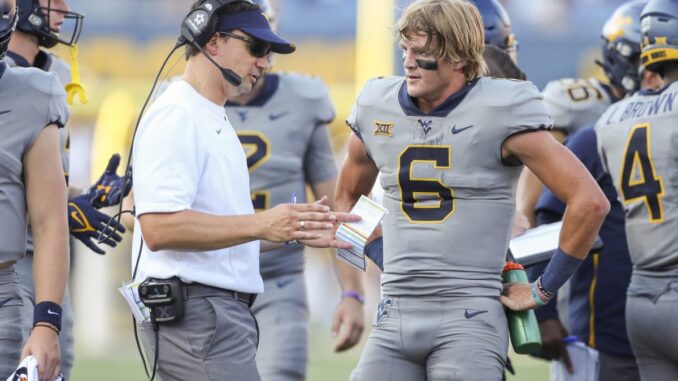
3 Reasons Why Neal Brown Hasn’t Handed the Offense Over to Garrett Greene
As West Virginia University football navigates a pivotal season, the spotlight remains on head coach Neal Brown and his decision-making regarding the offense. Despite Garrett Greene’s rise to prominence and increasing fan support, Brown has yet to fully hand over the reins to the dynamic quarterback. Here are three key reasons behind this decision:

1. Balancing Experience and Development
One of the primary factors influencing Brown’s approach is the balance between experience and development. While Greene has showcased remarkable talent, the coaching staff understands the value of a well-rounded offense. By not placing all the responsibility on Greene, Brown aims to foster his growth while still leveraging the skills of more experienced players. This strategy allows the coaching staff to create a cohesive unit where Greene can develop without the pressure of being the sole focal point. In the long term, this approach can yield a more resilient and versatile offense.
2. Strategic Game Management
Brown’s offensive philosophy emphasizes strategic game management, which involves careful consideration of when to unleash Greene’s talents. By maintaining a balanced offensive scheme that incorporates a mix of run and pass plays, Brown seeks to control the tempo of games and minimize turnovers. Relying heavily on a young quarterback can lead to mistakes, especially in high-pressure situations. By gradually increasing Greene’s responsibilities, Brown can ensure that the offense is not overly reliant on one player, which is crucial for maintaining consistency throughout the season.
3. Team Dynamics and Chemistry
Another critical reason for Brown’s cautious approach is the importance of team dynamics and chemistry. Transitioning to a new offensive leader can disrupt established rhythms and relationships among players. The coaching staff must consider how Greene’s ascendance would affect the rest of the offense, including the running backs and wide receivers who have developed a rapport with the current system. By maintaining a balanced approach, Brown can ensure that all players remain engaged and invested, fostering an environment where teamwork thrives.
Conclusion
While the excitement surrounding Garrett Greene continues to grow, Neal Brown’s decision to withhold full control of the offense is rooted in a thoughtful strategy. Balancing experience and development, emphasizing strategic game management, and preserving team dynamics are all critical elements in shaping a successful football program. As the season progresses, fans will undoubtedly be watching closely, eager to see how Brown navigates this crucial phase and how Greene’s role evolves within the Mountaineers’ offense.
Leave a Reply